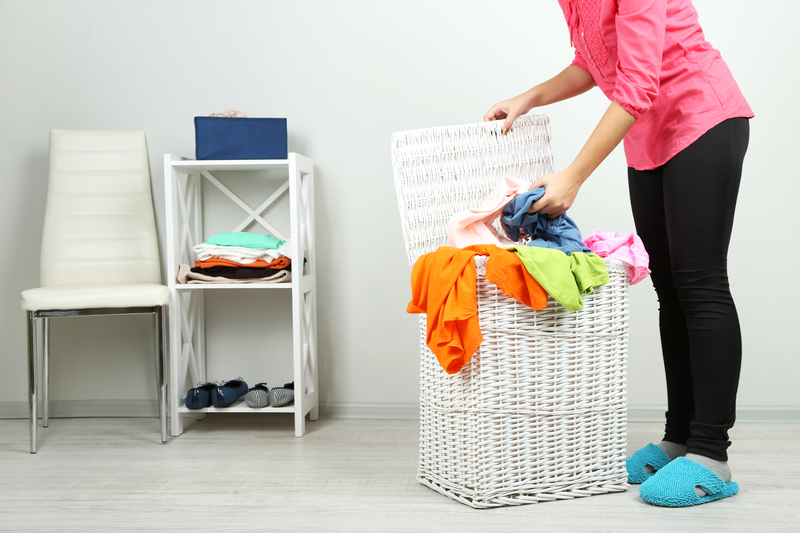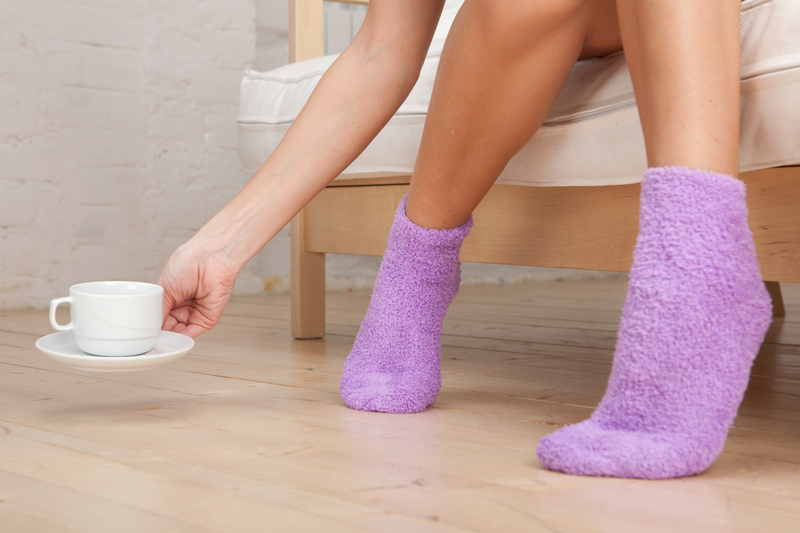Sustainable Ways to Protect Your Bathroom from Mold Growth
Posted on 06/10/2025
Sustainable Ways to Protect Your Bathroom from Mold Growth
A damp and steamy bathroom can be a haven for mold, but protecting your bathroom from mold doesn't have to rely on harsh chemicals and endless scrubbing. By adopting sustainable and eco-friendly methods, you can ensure your space remains clean, fresh, and healthy for your family, all while being kinder to the environment. In this comprehensive article, you'll discover a host of sustainable ways to stop bathroom mold before it starts, as well as how to address issues if they do arise.
Understanding Why Mold Loves Bathrooms
Before we explore eco-friendly prevention methods for bathroom mold, it's helpful to understand why bathrooms are so prone to this issue. Mold and mildew thrive in warm, humid, and poorly ventilated spaces--exactly the environment most bathrooms provide. Showers, baths, and sinks add plenty of moisture to the air, and without proper management, condensation gathers on walls, ceilings, and tiles, creating perfect conditions for spores to develop.
- High humidity from hot water usage
- Poor ventilation traps moisture inside
- Absorbent surfaces like grout and caulk hold water
- Lack of sunlight prevents drying and natural disinfecting
Recognizing these risks, it's crucial to address them with solutions that don't damage indoor air quality or contribute to environmental pollution.

1. Boost Ventilation for Lasting Mold Protection
One of the most sustainable ways to prevent mold in your bathroom is by improving airflow. Reducing the amount of lingering moisture through natural ventilation minimizes mold's favorite condition--humidity.
Open Windows and Doors
- Open a window during and after bathing or showering to allow steam to escape. A cross-breeze is especially effective.
- Leave the bathroom door ajar post-shower, even for just 15-20 minutes, to help disperse humidity throughout your home instead of trapping it in the bathroom.
Install Eco-Friendly Exhaust Fans
- Choose energy-efficient exhaust fans with humidity sensors. These automatically turn on when moisture levels are high and switch off when humidity drops.
- If replacing an old fan, opt for Energy Star-certified models to save on electricity bills and reduce your carbon footprint.
2. Choose Mold-Resistant and Sustainable Materials
Switching to eco-friendly materials is an excellent, long-term way to stop mold from growing in your bathroom. Many traditional materials can absorb water, while others may emit VOCs (Volatile Organic Compounds) that worsen air quality.
Opt for Non-Toxic Paints and Sealants
- Use mold-resistant paints made with natural ingredients or low/zero VOC ratings.
- Apply organic, lime-based plasters instead of synthetic paints for natural antibacterial and antimicrobial properties.
- Seal tile grout and edges with eco-friendly, waterproof caulk to block water infiltration and mold development.
Swap Out Absorbent Materials
- Replace traditional cotton bath mats with bamboo or teak alternatives--these dry faster and are resistant to mold and mildew.
- Use natural stone, porcelain, or ceramic tiles instead of those with high porosity.
3. Harness Nature's Power: Plants and Sunlight
Mother Nature is one of your biggest allies in creating a mold-free, sustainable bathroom. Incorporating certain plants and maximizing daylight can work wonders.
Indoor Plants That Combat Mold
- Boston ferns and peace lilies absorb humidity and help purify the air.
- Bamboo palms and snake plants (Sansevieria) thrive in low light, adding greenery while fighting mold spores naturally.
Increase Natural Light
- Keep window coverings open during the day to let sunlight in--UV rays naturally inhibit mold growth.
- If your bathroom lacks windows, consider installing a skylight or sun tunnel to brighten up the space sustainably.
4. Embrace Green Cleaning Methods
Ditch the bleach and synthetic fungicides! Natural cleaning solutions are just as effective for routine bathroom maintenance, without exposing your home to toxins.
Eco-Friendly Cleaners for Mold Prevention
- White vinegar: Its natural acetic acid kills over 80% of mold species. Spray directly onto shower walls, tiles, or glass, let sit, then rinse.
- Baking soda: Ideal for scrubbing stubborn grout stains and eliminating musty odors--simply mix with water.
- Tea tree oil: Dilute with water and use as a powerful, natural antifungal. Only a few drops are needed per spray bottle.
- Lemon juice: Its acidity helps dissolve mold and leaves a fresh, natural scent.
Routine Cleaning: A Preventive Must
- Wipe down damp surfaces like tiles, shower doors, and mirrors after every use.
- Wash and dry bath mats and towels regularly--ideally, hang outside to take advantage of the sun's antimicrobial properties.
- Pay special attention to corners, under sinks, and behind toilets, where moisture often collects but is easy to overlook.
5. Control Humidity the Sustainable Way
Keeping indoor humidity below 50% is key to sustainable bathroom mold prevention. There are several energy-wise, sustainable strategies to accomplish this.
Natural Humidity-Absorbing Solutions
- Charcoal briquettes or bags: Natural charcoal pulls moisture from the air. Place a few in a breathable bag on a shelf or behind the toilet.
- Baking soda dishes: Set out shallow bowls in problem areas--change every few weeks to maintain effectiveness.
- Houseplants: As mentioned earlier, they absorb excess ambient moisture with their leaves.
Sustainable Dehumidification
- Use solar-powered dehumidifiers for a chemical-free, low-energy option.
- Put an old-fashioned box fan in the room to improve air circulation and encourage drying.
6. Design for Drainage and Quick Drying
Smart bathroom design is a highly effective way to preserve your bathroom from mold issues over the long haul. Quick drainage and thorough drying shouldn't be an afterthought.
Re-think Slopes and Tiling
- Ensure that all bathroom surfaces, especially shower floors, are sloped to direct water swiftly toward drains and prevent pooling.
- Large, seamless tiles leave less grout exposed (grout is a common breeding ground for mold).
Upgrade Shower Curtains and Glass
- Choose high-quality, washable, PEVA or hemp-based shower curtains instead of PVC--they resist mold and are safer for the environment.
- Opt for easy-to-clean, frameless glass shower enclosures to minimize nooks where moisture accumulates.
7. Prioritize Quick Repairs and Regular Inspections
Proactive maintenance is a cornerstone of eco-friendly mold prevention in the bathroom. Small problems can quickly spiral into major issues if ignored.
- Fix leaks immediately: Even a dripping faucet or slow drain can fuel mold growth behind walls or floors.
- Inspect and re-seal grout or caulk yearly to ensure watertight seals in tubs, showers, and around sinks.
- Check vent fans seasonally for lint, dust, or blockages--efficient vents are key!
8. Manage Shower Habits and Water Usage Sustainably
Changes in your daily bathroom routine can significantly reduce the risk of mold. By being mindful of your water use and how you clean up, you not only help prevent mold in bathrooms, but you also save valuable natural resources.
- Keep showers short and use low-flow heads to reduce the amount of lingering steam.
- Squeegee shower walls and doors after each use. This simple habit removes the vast majority of moisture mold needs to start growing.
- Hang towels and bathmats to dry fully between uses--never leave them crumpled on the floor!
9. Use Smart Technology for Sustainable Mold Monitoring
Smart home technology isn't just for convenience: it can also make eco-friendly bathroom mold prevention much easier!
- Humidity sensors and smart exhaust fans automatically manage air quality and moisture levels without wasteful, constant energy use.
- Water leak detectors can send alerts to your phone if plumbing or appliance issues are detected, helping you act before leaks become mold problems.
- Temperature and airflow monitors provide real-time feedback, allowing for data-driven adjustments to your ventilation and cleaning schedules.
10. DIY Green Mold Clean-Up Methods
Already have mold spots in your bathroom? Sustainable removal techniques are safer for your family and the planet.
- White vinegar solution: Spray undiluted onto the moldy surface, wait one hour, then wipe away. Repeat weekly as needed.
- Baking soda paste: Mix baking soda and water, apply to affected tile or grout with a toothbrush, scrub, and rinse off.
- Hydrogen peroxide 3%: Spray and let sit for 10 minutes--its effervescence helps lift mold from porous surfaces. Use sparingly as it can bleach colored materials.
- Essential oils like tea tree or eucalyptus: Both are natural antifungals with a pleasant scent. Mix 10 drops with 2 cups of water for a gentle cleaning spray.

Conclusion: A Greener Bathroom, Free from Mold
Adopting sustainable practices to protect your bathroom from mold growth not only safeguards the health and beauty of your home, but also lessens your environmental impact. By focusing on proper ventilation, eco-friendly materials, daily habits, and green cleaning solutions, you can enjoy a sparkling, mold-free bathroom for years to come.
- Start with small changes, like opening windows or swapping to a bamboo mat.
- Incorporate natural cleaning agents into your routine rather than relying on harsh chemicals.
- Invest in smart upgrades for fans, humidity monitoring, and water-resilient materials if you're renovating.
Remember, a sustainable bathroom mold-free approach keeps your space healthier, lowers energy consumption, and helps the planet--all while reducing the time and stress of traditional bathroom maintenance. Now's the time to make the shift towards a fresh and green sanctuary!
Frequently Asked Questions (FAQ): Sustainable Mold Prevention in Bathrooms
Can I prevent bathroom mold without any chemicals at all?
Yes! Natural methods--like vinegar, baking soda, essential oils, and sunlight--are highly effective. Coupled with good ventilation and quick-drying habits, chemical cleaners are rarely necessary.
Do houseplants really help reduce bathroom mold?
Absolutely. Plants such as ferns, peace lilies, and bamboo palms help absorb ambient moisture and improve air quality, making them great for green mold prevention.
How often should I clean to keep mold away?
Aim for a quick clean (wiping surfaces, squeegeeing glass) after each use, and a deeper, natural cleaning (including grout and hard-to-reach corners) weekly.
Is repainting with mold-resistant paint worth it?
Yes. Using mold-resistant, eco-friendly paint provides ongoing protection with less need for intensive scrubbing or chemical treatments down the line.
What's the best sustainable way to fix an existing mold problem?
Identify and repair the moisture source, clean with vinegar, hydrogen peroxide, or baking soda mixtures, and ensure thorough drying and ventilation. For large or concealed growth, consult a green-certified mold remediation professional.
With these sustainable approaches to bathroom mold prevention, you can protect your home, your health, and our planet--all at once.


